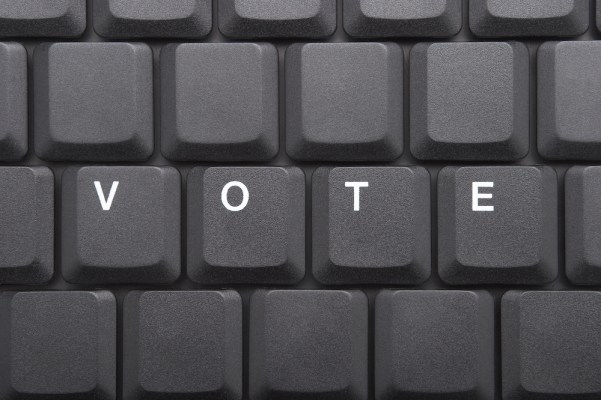The list of states delaying primaries and elections is quickly increasing, with New Jersey adding local elections to the list. Even Congress — in a break from tradition — is rethinking what it means to vote safely in this new paradigm, stirring calls for remote voting for its upcoming legislation around the pandemic.
This debate, however, lacks important context: Many U.S. citizens are already voting online at home and abroad. In fact, 23 U.S. states and the District of Columbia allow some voters to return absentee ballots via email, while five others permit some voters to do so using a web portal.
We are election officials in two states that require us to offer an online method to some of our voters. For these voters, the argument is not an academic one, but an issue of necessity — traditional voting methods simply don’t work for those living abroad, deployed in the military or those with disabilities. As election officials, it’s our duty to stand up for the constitutional rights of our citizens, whatever their circumstances, and the reality is that online voting dramatically improves the opportunities for these two groups to engage with our democracy.
We should not be debating whether online voting should exist, but rather asking: What is the most secure way to facilitate electronic voting? Because it’s already being done. And because it’s needed by some voting groups — whose volume might expand in the near future.
As a country, we currently have three million eligible voters living abroad, and only 7% cast ballots in the 2016 elections, according to the Federal Voting Assistance Program’s biennial Overseas Citizen Population Analysis. This same analysis found that removing logistical barriers to voting would raise participation by 30%. A different analysis separately found that while nearly one million active-duty military are eligible to vote, only around 23% of them actually did in 2018.
The traditional system of mailed-in absentee ballots and centralized polling places is failing these voters, and they aren’t alone among the disenfranchised. The turnout story is also grim for the 35 million U.S. voters with disabilities. An October 2017 Government Accountability Office report also found widespread barriers to disabled voting, such as machines that could have made it impossible to cast votes privately. It’s no wonder that, as a 2017 Rutgers University study found, disabled voting participation has declined in each of the last two presidential elections, dropping from 57.3% in 2008 to 55.9% in 2016.
New technologies offer promise to expanding and securing access for overseas citizens and voters with disabilities. Consider MacCene Grimmett, who is, at 106, Utah’s oldest voter. When she was born in 1913, women did not have the right to vote. Homebound since she broke her ankle two years ago and unable to hold a pen steadily, she was able to cast her ballot last year thanks to an app on a mobile device. The technology empowered her, helping her execute — independently, anonymously, securely and with dignity — her most basic duty as a citizen.
Pilots and tests are happening at different scales in localities around the country, and early results are demonstrating positive outcomes. In 2019,Utah County’s offering mobile-phone voting to overseas citizens resulted in a marked increase in participation rates. In fact, turnout rates for voters using the app overseas were higher than for those who went to the polls in-person on Election Day. Oregon also successfully permitted its citizens to use app-voting in 2019.
Importantly, all pilots include the ability to rigorously audit the results so we can ensure 100% accuracy along the way.
The challenge, ultimately, is how to continue leveraging technology in a secure and innovative way to maximize access. Safety is paramount: We are deeply aware that we live in an interconnected world where foreign adversaries and other malicious entities are using information technology to try to undermine our political system. It’s our responsibility to understand the environment in which we operate as we forge ahead.
But while these concerns can be valid, they should not outweigh both the necessity and potential benefits of internet-based voting. Just as we cannot place blind faith in the infallibility of our technologies, we also cannot fall into a senseless, all-encompassing mistrust that would both disenfranchise millions of voters and shake trust in our elections.
Rather than making sweeping judgments, we need to weigh each case individually. Why, for example, should Iowa’s failure, which involved poor training, lack of testing and trouble reporting caucus results on one specific technology platform by a political party adversely affect whether a disabled Utahn or an Oregonian soldier can cast their vote — and verify it — by app?
Expanding voter participation by ensuring ballot access for all citizens is paramount to protecting our democracy. In the 21st century, that will necessarily include electronic methods, particularly as we face challenges with voters abroad and contemplate emerging challenges at home like COVID-19, where large public gatherings — and long lines — spark new threats to consider.
We must continue trials and experiments to broaden access for voters, while hardening the system and making it more resilient, and that means beginning with small-scale pilots, seeing what works, stringently auditing the results and then employing that knowledge in new rounds of testing. App-based voting, for example, is already more secure than returning a ballot by email, and it also preserves voter anonymity in a way that email makes impossible (because whoever opens the email to hand-copy the vote onto a paper ballot for tabulation knows who sent it).
These are the everyday successes that internet-based voting is producing right now. And they ought to be driving the discussion as we move forward slowly, responsibly and confidently.

